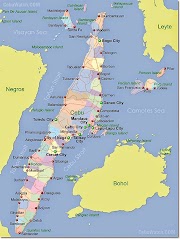As the Philippines observes Semana Santa or Holy Week, the air fills with solemnity and devotion. Yet, amidst the reflection and prayer, there's also a warmth that comes from cherished traditions, one of which is the delightful dessert known as Binignit.
Binignit is a vibrant stew made with glutinous rice, an assortment of colorful fruits and root crops like saba bananas, taro, and sweet potato, all simmered in a rich coconut milk base. The result is a symphony of textures and flavors, from the soft chew of the rice to the sweetness of the bananas and the subtle earthiness of the root crops.
But Binignit transcends mere deliciousness. It holds a special place in Filipino hearts, particularly during Semana Santa. Here's why:
- A Tradition Rooted in Faith: During Holy Week, many Filipinos abstain from meat as a form of sacrifice and reflection. Binignit, being naturally meat-free, becomes a perfect and comforting option for the Lenten season.
- A Symbol of Abundance: The abundance of ingredients in Binignit, from the various fruits and vegetables to the creamy coconut milk, signifies blessings and prosperity. It's a reminder to be grateful for what we have, even during times of sacrifice.
- A Taste of Home: The aroma of Binignit evokes a sense of nostalgia and togetherness. It's a dish often shared with family and friends, creating lasting memories during this special week.
Whether enjoyed warm or chilled, Binignit is more than just a dessert; it's a cultural treasure that embodies the spirit of Semana Santa in the Philippines. It's a reminder of faith, family, and the simple joys that come from sharing a delicious tradition.
Do you have any special memories of Binignit during Semana Santa? Share them in the comments below!










0 Comments